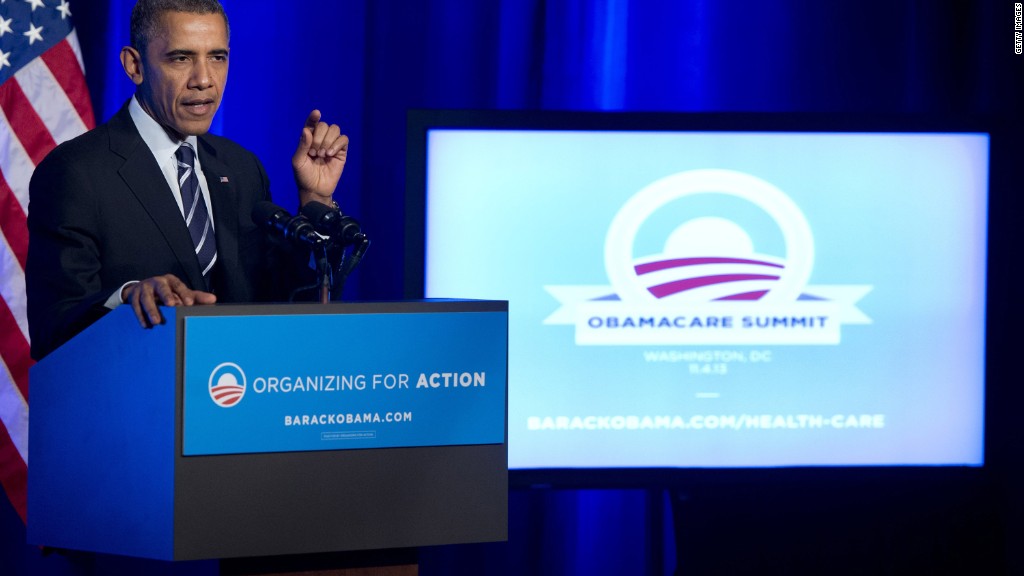
Some health insurers say they're paying too much to rival Blue Cross Blue Shield plans under a key pillar of the federal health law designed to compensate insurers that take on sicker and more expensive patients.
The critics' chief complaint is that Obamacare's risk-adjustment program unfairly rewards health plans that have excess administrative costs and higher premiums. That comes at the expense of more efficient, lower-priced plans in the individual market, they say.
The Obama administration is considering changes to how these dollars are allocated in the state and federal exchanges, but critics say the proposed modifications don't go far enough.
Molina Healthcare (MOH), a California-based insurer, covers about 600,000 people through exchanges in California, Florida and seven other states. The company's chief executive, Dr. J. Mario Molina, said the flawed risk-adjustment program is hurting consumers by stifling competition and keeping rates artificially high.
"Across the board, the people benefiting from this are the Blues, so they are putting a lot of pressure on to keep the status quo," Molina said in an interview with California Healthline. "I think [the Obama administration] understands the issue, but they may lack the political will to change it."
Molina said it paid $254 million into the government's risk-adjustment pool, to be distributed to other insurers.
The Blue Cross and Blue Shield Association, which represents 36 plans across the country, has warned Washington against rewriting the rules. Federal officials "should not heed the calls to make radical changes to the risk-adjustment model from a small, but vocal, minority of health plans that did poorly," the industry association wrote to the Obama administration in a letter released in July.
The risk-adjustment program doesn't rely on government funds. Rather, insurers compensate each other for taking on sicker patients under a complex government formula. It relies on risk scores assigned to enrollees based on their age, gender and diagnosed medical conditions. The calculation also uses the average statewide premium, which reflects plans' administrative costs.
Related: Drawing more uninsured into Obamacare is critical to its survival
Health insurers big and small have said that methodology can hurt lower-priced plans and inflate what they owe.
Some of the new insurance co-ops created under the health law have sued the Obama administration, claiming that the program put them at a competitive disadvantage. The nation's third-largest health insurer, Aetna (AET)Inc., also said "the current model rewards inefficient and expensive plans." It isn't involved in the pending litigation.
For the first two years of exchange enrollment, Florida Blue received the most from risk adjustment — $705 million — based on a state-by-state review nationwide. Blue Shield of California was second with $317 million, and a unit of UnitedHealthcare (UNH) in New York was next at $127 million.
Overall, seven of the top 10 recipients for risk-adjustment dollars were Blues' plans for 2014 and 2015, federal data show. Blue Cross Blue Shield plans are major players in most state insurance markets, so their strong performance on risk adjustment could be expected. However, a separate analysis by the Fitch Ratings agency found that some of these top recipients also have higher-than-average administrative expenses company wide.
Blue Shield of California called these complaints about risk adjustment "inaccurate." It said the government formula is "completely independent" of a plan's administrative costs and does not reward higher premiums.
In a statement, Florida Blue said its reimbursements were "based on the size of the state's market, our market share and the risk profile of the people we attracted."
Federal health officials have also defended their program, saying it's working as intended to compensate insurers that enrolled sicker patients. They have proposed some changes, such as adding prescription drug data to the calculations for 2018.
"These changes will support issuers in serving the highest-cost enrollees while also seeking to make risk adjustment more predictable and more effective at spreading risk for all issuers," Kevin Counihan, chief executive of the federal marketplace, wrote in an August blog post.
Related: Will Obamacare survive as insurers pull out?
Under the health law, insurers must spend at least 80% of customers' premiums on medical care for individual policies. This rule helps limit what insurers can spend on administrative expenses and retain as profit.
Timothy Jost, a law professor at Washington and Lee University in Virginia, said some administrative expenses are worth counting in the risk-adjustment program because they're tied to managing patients with diabetes and other chronic conditions.
"Administrative expenses do get factored in and some insurers think that rewards inefficient insurers," Jost said. "But [U.S.] Health and Human Services has been skeptical of this argument."
Steve Shivinsky, a spokesman for Blue Shield of California, said "risk adjustment recognizes that Blue Shield attracted sicker members than the market average. That is the primary driver behind the reimbursement." But the San Francisco-based insurer also has been open about its struggle with excess overhead. In a recent memo to employees, it conceded that, "we spend more on administrative costs than other comparable health plans."
Blue Shield of California had the second highest expense ratio among Blues plans for the first nine months of 2015, according to Fitch Ratings. The California insurer spent 15.8% of its revenue on administrative expenses. The average for Blues plans nationwide was 10.6%. Florida Blue had an above-average expense ratio of 11.6%.
This story was produced by Kaiser Health News, which publishes California Healthline, an editorially independent service of the California Health Care Foundation.


